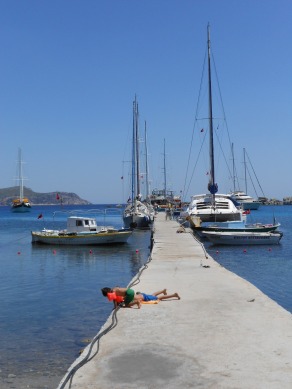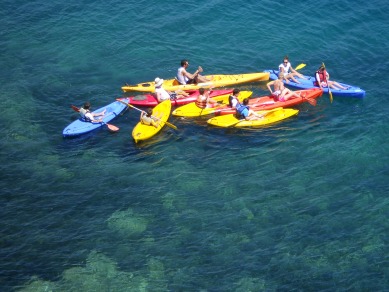Turkey in summer can be hot. Stinking hot. The sort of heat that turns air-conditioning into a necessity rather than a luxury. But for most people summer is precisely when they will be visiting for the promise it hold out of of guaranteed sun to those from the frozen north. That’s certainly true along the Aegean and Mediterranean coasts and, to some extent inland as well, although there summer is slow to get into its stride and evenings can be cool right into June.
The period to be aware of is mid-June to mid-September. This is when Turkish schools are closed and families are on the move all over the country, filling the buses and sometimes the accommodation too (although many better-off Turks keep summer homes (yazliks) of their own which eases the pressure on the hotels). Some resorts such as Bodrum and Alacatı, near İzmir, that are popular with Turks become almost impossibly busy because their narrow streets were never intended to cope with such crowds.
The good news is that this is also the period when everything is open and/or working. For example, some of the ferries to the Greek islands only operate during the school holidays. Some hotels in the resorts only open over the summer. And this is when the beach clubs at places like Alacatı and Kilyos, near İstanbul, get into their stride. It’s also when some popular İstanbul clubs and restaurants such as Babylon relocate to the seaside.
This is when Turkey is at its hottest – and that can mean extremely hot in Central and Southeastern Anatolia as well as on the Mediterranean where humidity (particularly bad around Antalya, Fethiye and Adana) makes the intense heat harder to bear. Even istanbul suffers from extreme humidity in July and August. Unless you have to stick with summer, you’re better advised to travel in spring or autumn when temperatures are more comfortable.
Over in the southeast part of the country temperatures can sometimes rise to as high as 50 degrees Celsius. Not surprisingly many of the locals in towns such as Mardin, Midyat and Şanlıurfa take to the roofs of their houses at night to sleep on tahts (thrones) of wood or, more usually these days, metal.
The one part of the country that remains cool even in summer is the Black Sea, especially if you head up into the Kaçkar Mountains at the far eastern end. This is also when you have the best chance of avoiding the Black Sea’s regular rainfall making it the perfect time to head that way.
Inevitably prices are at their highest in summer when a seller’s market leaves you with less leeway to bargain for a discount over anything. Summer weekends are especially bad in places such as Safranbolu and Assos that are within easy reach of weekending İstanbullus. Around İzmir small coastal resorts like Foça with limited accommodation also struggle to house everyone. Travel mid-week to have a better chance of finding a room at a price you can afford.
Surprisingly, İstanbul can be a little easier to get round in summer when many locals leave town. However, the traffic adds to the heat and humidity can be a problem here too. Expect crowds at popular sights such as Topkapı Palace and Ayasofya to be unbearable (ditto at Ephesus on the Aegean coast) – do yourself a favour and pay for museum tickets online in advance to safe time standing in line.
The wildflowers may have dried up but this is Turkey’s fruit season when figs ripen in the villages and streets fill with barrows full of rich red cherries, bright yellow plums and football-sized water melons. Oranges plummet in price and freshly squeezed orange juice becomes a breakfast treat everyone can afford.
The sky will be blue for weeks on end. What’s not to like for those who can stand the heat?



